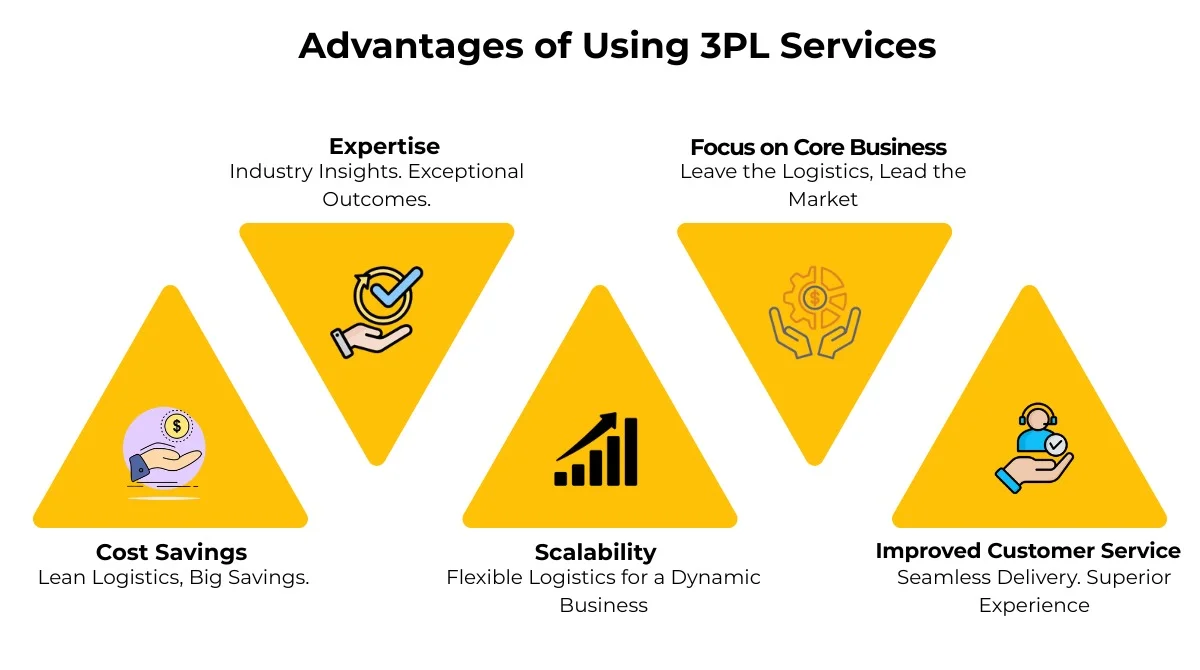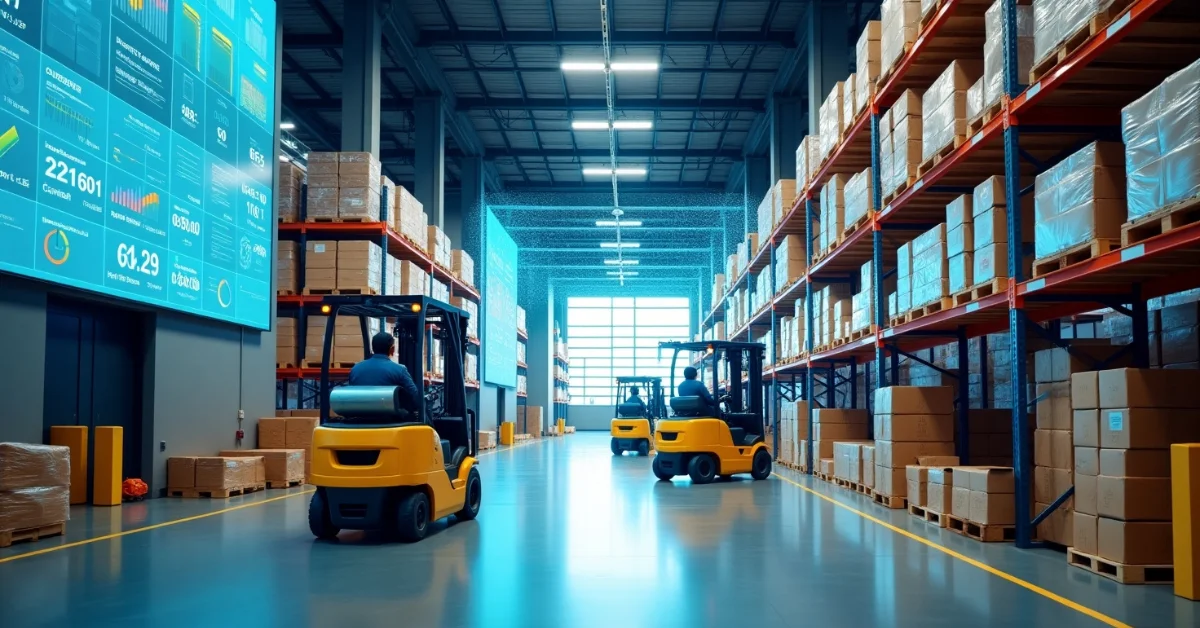In the dynamic landscape of modern business, organizations continuously explore strategies to enhance efficiency and concentrate on their primary competencies. One proven approach involves collaborating with a Third-Party Logistics (3PL) provider to optimize logistics and supply chain operations. But what exactly does this entail?
Understanding 3PL
Third-Party Logistics (3PL) refers to outsourcing logistics and supply chain management functions to specialized service providers. These providers handle various tasks such as warehousing, transportation, inventory management, and order fulfillment. Utilizing the specialized knowledge and established infrastructure of third-party logistics providers allows businesses to improve operational efficiency and scale their operations more effectively.
Key Services
3PL firms provide a variety of services designed to satisfy the various demands of companies:
- Warehousing and Storage: Safe and organized storage solutions for products.
- Transportation Management: Ensuring the seamless and cost-effective movement of goods between locations through optimized routing and carrier selection.
- Inventory Management: Monitoring and managing stock levels to prevent shortages or overstocking.
- Order Fulfillment: Processing and delivering customer orders promptly.
- Returns Management: Streamlining the process of product returns and exchanges to ensure customer satisfaction and efficient reverse logistics.
Benefits of Using 3PL Services

Partnering with a 3PL provider offers several advantages:
- Cost Savings: Reduces the need for significant investments in warehouses, vehicles, and staff.
- Expertise: Gaining access to specialized industry knowledge and proven best practices that enhance logistics performance and decision-making.
- Scalability: Easily adjust logistics operations based on business needs.
- Focus on Core Business: Allows companies to concentrate on product development and marketing.
- Improved Customer Service: Faster and more reliable delivery enhances customer satisfaction.
When to Consider a 3PL Partner
Businesses might consider engaging a 3PL provider in the following scenarios:
- Rapid Growth: When expanding quickly and needing scalable logistics solutions.
- Limited Resources: Lack of infrastructure or expertise to manage logistics internally.
- Geographical Expansion: Entering new markets where local logistics support is beneficial.
- Seasonal Demand: Managing fluctuations in demand during peak seasons.
Choosing the Right 3PL Provider
Selecting a suitable 3PL partner involves careful consideration:
- Experience: Choose providers with a demonstrated history of success and relevant experience within your specific industry.
- Technology: Ensure they use up-to-date systems for tracking and managing logistics.
- Flexibility: Ability to adapt to your specific business needs.
- Customer Service: Responsive and proactive communication is crucial.
Potential Challenges
Even while 3PL services have many advantages, there may be certain drawbacks to consider:
- Loss of Control: Outsourcing may lead to less direct oversight of logistics operations.
- Integration Challenges: Coordinating and aligning technological systems and operational processes between the business and the 3PL provider can be complex and time-consuming.
- Dependence: Relying heavily on a third party may pose risks if the provider faces issues.
Companies Use 3PLs
Many companies, both big and small, use 3PL services to improve how they manage logistics. This approach helps them focus on what they do best whether it’s making products, selling online, or providing services. 3PLs handle the complex work of storing, moving, and delivering goods, which saves time and money.
Common Types of Companies That Use 3PLs

- E-commerce Businesses: Online stores use 3PLs to store products in warehouses and ship them quickly to customers.
- Retail Brands: Clothing, electronics, and other retail brands use 3PLs to manage inventory and restock stores on time.
- Manufacturers: Companies that make goods use 3PLs to handle transportation of raw materials and finished products.
- Subscription Box Services: These companies rely on 3PLs for packing and shipping boxes regularly and on schedule.
- Startups and Small Businesses: Small companies use 3PLs so they don’t have to buy warehouses or hire delivery staff.
Real-World Examples
- Amazon (via Fulfillment by Amazon – FBA): Many sellers use Amazon’s own 3PL service to store, pack, and ship their products.
- Nike: The sports brand partners with logistics firms to manage their global supply chain, from factories to stores.
- Shopify Sellers: Small businesses using Shopify often partner with third-party logistics services to handle fulfillment.
These companies trust 3PLs because it makes their operations smoother, cuts down on delays, and helps them offer better service to their customers. By using 3PLs, businesses don’t have to build expensive infrastructure they can grow faster and serve more customers without the usual hassles of logistics.
3PL vs 4PL: What’s the Difference?
You might hear the term 4PL along with 3PL and wonder what it means.
- 3PL (Third-Party Logistics): Handles physical logistics tasks like storage, packing, and shipping.
- 4PL (Fourth-Party Logistics): Manages the entire supply chain, including overseeing multiple 3PLs, suppliers, and even manufacturers.
In short:
- 3PL = Do the work
- 4PL = Manage the work
If you’re a small or mid-size business, 3PL is usually enough. Larger companies with more complex needs may turn to 4PL.
Technology Behind 3PL
Modern 3PL providers use advanced technology to manage their operations. This makes things faster, more accurate, and easier to track. Common tech features include:
- Inventory Management Systems (IMS): To monitor stock levels and avoid selling out.
- Order Management Software (OMS): To keep track of orders from different platforms like Amazon, Shopify, or eBay.
- Real-Time Tracking: Customers and business owners can see shipping updates anytime.
- Data Analytics: Helps improve decision-making by showing which items sell the most or where delays happen.
When a 3PL uses the right tools, it improves your supply chain and customer experience.
Tips for Working with a 3PL Provider
Following the selection of a 3PL partner, follow these pointers to ensure a successful partnership:
- Set Clear Expectations: Define how you want your orders packed, shipped, and handled.
- Communicate Regularly: Stay in touch with your 3PL team to avoid misunderstandings.
- Share Forecasts: Let your provider know about busy seasons so they can plan ahead.
- Track Performance: Monitor shipping times, error rates, and customer feedback.
- Stay Flexible: Be open to changing processes if it helps your business grow.
Success in the long run might result from a solid collaboration with your 3PL supplier.
Conclusion
Third-Party Logistics (3PL) plays a vital role in modern supply chain management, offering businesses the opportunity to enhance efficiency, reduce costs, and focus on their core competencies. By understanding the services offered, benefits, and potential challenges, companies can make informed decisions about partnering with a 3PL provider to support their growth and operational goals.




naturally like your web site however you need to take a look at the spelling on several of your posts. A number of them are rife with spelling problems and I find it very bothersome to tell the truth on the other hand I will surely come again again.